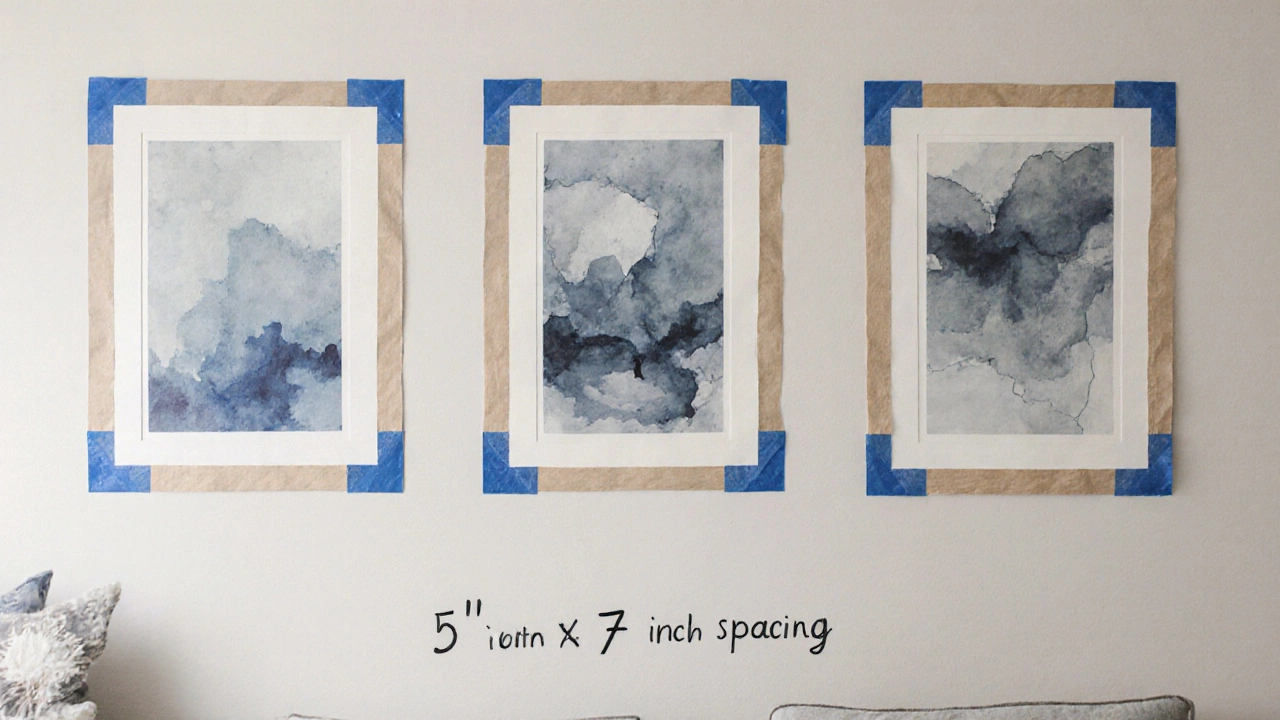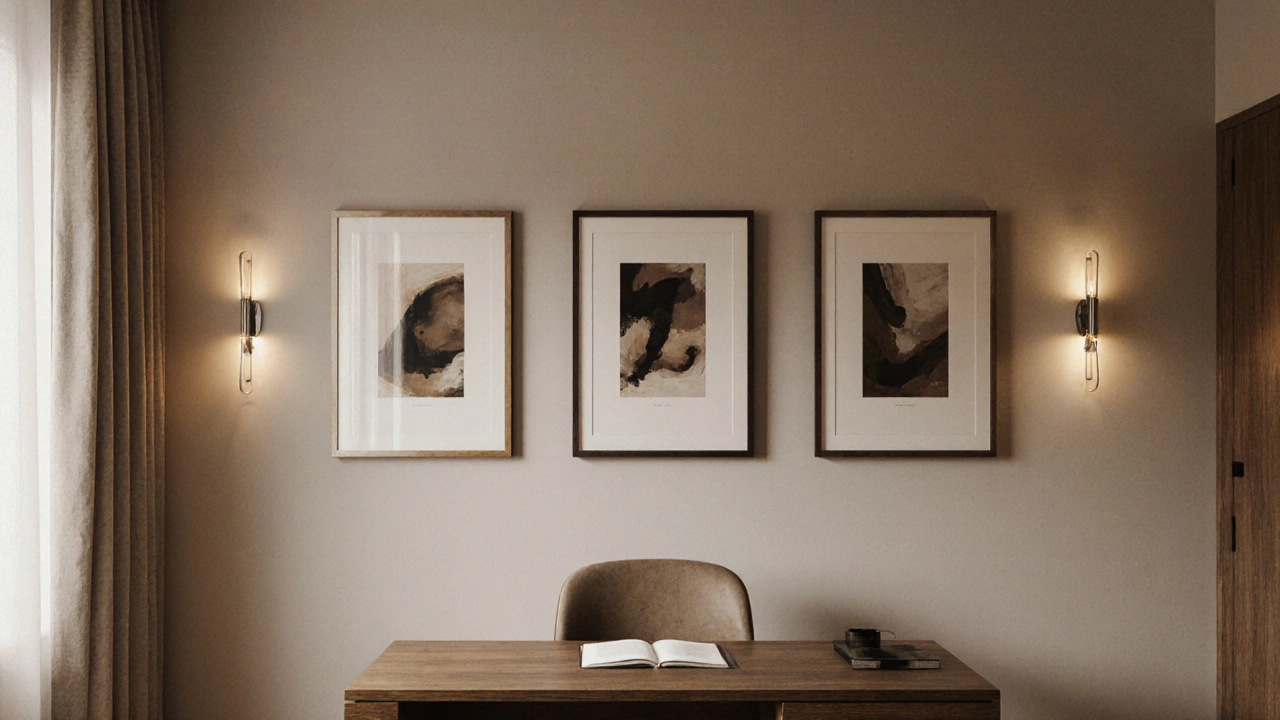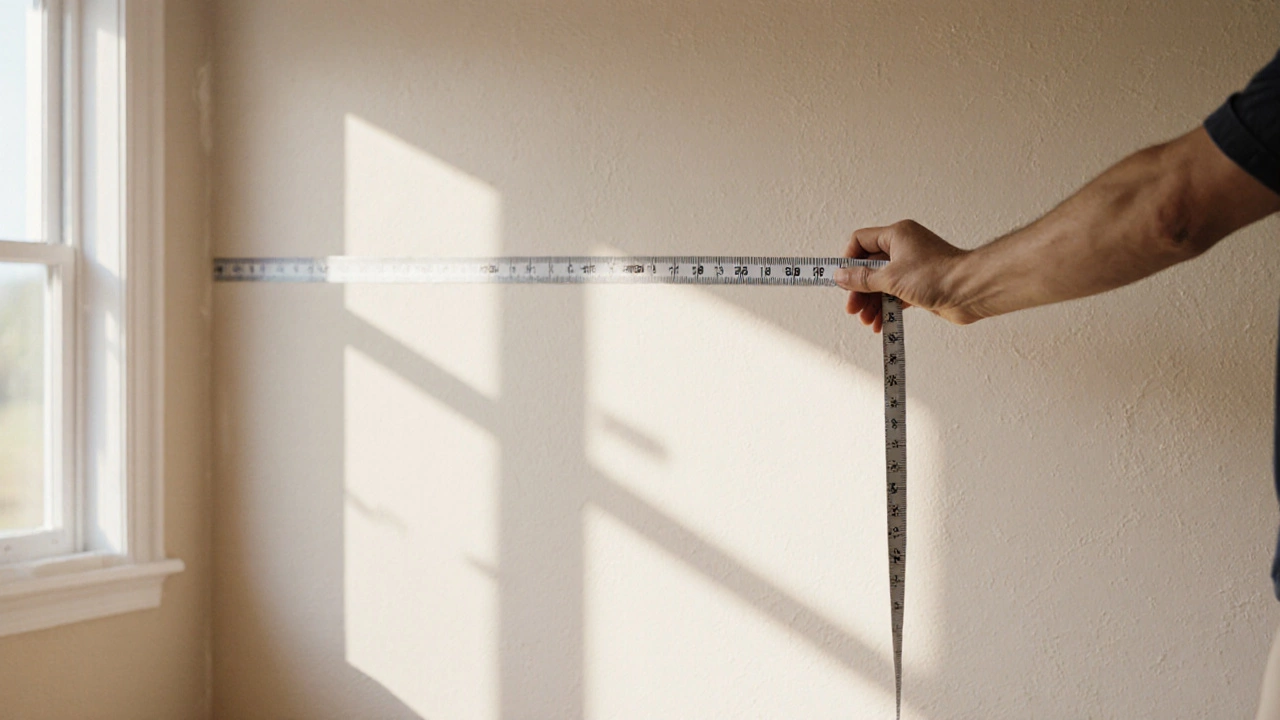Wall Art Calculator
Wall Art Calculator
Determine ideal art size and spacing using the 357 rule
Results
Ever stared at a blank wall and wondered why some arrangements just feel right while others feel off? The answer often boils down to a simple proportion: the 357 rule. This handy guideline helps you create visual balance with wall art, photos, or any decorative pieces without needing a math degree.
Key Takeaways
- The 357 rule suggests three items about five inches wide, spaced seven inches apart.
- It works best on medium‑sized walls (8‑12 ft wide) and with artworks that share a common theme.
- Combine it with color harmony and focal point principles for a polished look.
- Adjust the numbers (5" and 7") proportionally for larger walls or bigger pieces.
- Avoid overcrowding by respecting negative space and the rule of thirds.
What Is the 357 Rule?
In interior design is the art and science of shaping interior spaces to be functional and aesthetically pleasing, the 357 rule is a proportion guideline that suggests using three visual elements, each roughly five inches wide, spaced about seven inches apart on a wall. The numbers don’t have to be exact; think of them as a starting ratio that you can scale up or down.
The rule addresses three core design needs:
- Quantity: Three items create a natural rhythm without overwhelming the eye.
- Size: Around five inches per piece offers enough visual weight to be noticed.
- Spacing: Seven inches of breathing room keeps the composition airy and balanced.
Where Did the 357 Rule Come From?
The 357 rule grew out of practical experience among gallery curators and interior stylists in the early 2000s. They noticed that exhibition walls featuring three similarly sized artworks, each separated by a comfortable gap, generated the most positive visitor feedback. Over time, the guideline migrated from art galleries to residential design, especially for wall art arrangements.
It shares DNA with two classic design concepts:
- The golden ratio (1:1.618), which dictates pleasing proportions in nature and art.
- The rule of thirds, a photography principle that divides a frame into a 3×3 grid to place focal points.
While the golden ratio leans on mathematical precision, the 357 rule is pragmatic-a quick mental cheat sheet for everyday decorating.

Applying the 357 Rule to Wall Art
Here’s a step‑by‑step process you can follow the next time you’re hanging pictures:
- Measure your wall. Determine the usable width after accounting for any furniture or baseboards.
- Choose three pieces. Opt for artworks or frames that share a common style, color palette, or theme.
- Estimate size. Aim for each piece to be about five inches wide if the wall is roughly eight to twelve feet wide. For larger walls, multiply the dimensions (e.g., 8" wide and 11" spacing).
- Mark spacing. Use painter’s tape to lay out a seven‑inch gap between the imagined edges of each piece.
- Level and hang. Start with the central piece, ensuring its midpoint aligns with the wall’s center. Then hang the side pieces using the pre‑measured gaps.
Real‑world example: In a Wellington living room with a 10‑ft wide wall, I used three abstract prints sized 10"×12" each, spaced 14" apart-essentially scaling the 5‑7 ratio by a factor of two. The result was a cohesive focal wall that felt both intentional and relaxed.
357 Rule vs. Golden Ratio vs. Rule of Thirds
| Rule | Typical Use | Key Ratio | Best For |
|---|---|---|---|
| 357 Rule | Home wall art arrangement | 3 items:5"size:7"spacing | Medium walls, quick setups |
| Golden Ratio | High‑end galleries, architectural details | 1:1.618 | Large scale, precise aesthetics |
| Rule of Thirds | Photography, large murals | Grid of 3×3 | Placing focal points, dynamic layouts |
Notice how the 357 rule sacrifices exactness for speed. When you have limited time or a modest budget, it’s the most forgiving.

Tips, Tricks, and Common Mistakes
- Scale proportionally. If your wall is double the average width, double the 5‑inch and 7‑inch measurements.
- Mind the height. Keep the top of the art at eye level (about 57‑60 inches from the floor) for optimal viewing.
- Use consistent framing. Mixing wildly different frames can break the visual rhythm even if the 357 ratio is met.
- Avoid clutter. Adding a fourth piece without adjusting spacing usually defeats the rule’s purpose.
- Play with color. A unifying color scheme reinforces balance; a single accent color can create a focal point.
Frequently Asked Questions
Can I use the 357 rule with photos instead of artwork?
Absolutely. The rule works for any rectangular visual element-photos, prints, or even mirrors-as long as you keep the size and spacing consistent.
What if my wall is shorter than 8 feet?
Shrink the dimensions proportionally. For a 6‑ft wall, aim for pieces about 3‑4 inches wide with a 5‑inch gap.
Do I have to use exactly three pieces?
Three is the sweet spot for rhythm, but you can adapt the rule. If you need four pieces, increase the spacing or reduce each piece’s width to maintain balance.
How does lighting affect the 357 rule?
Even lighting helps each element stand out equally. Use wall‑mounted fixtures or track lighting to illuminate all three pieces without casting harsh shadows.
Is the 357 rule only for living rooms?
No. It works in hallways, home offices, bedrooms, and even small commercial spaces-anywhere you need a quick, balanced wall composition.
By mastering the 357 rule, you gain a fast, reliable tool for turning empty walls into eye‑catching showcases. Whether you’re a seasoned designer in Wellington or a DIY enthusiast in a small apartment, the rule gives you confidence to hang art that feels right the first time.

